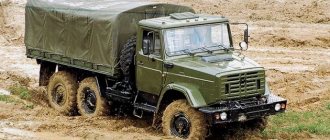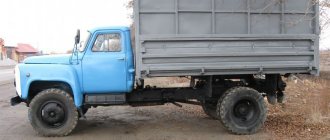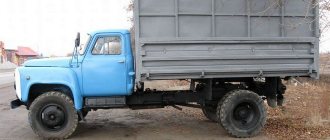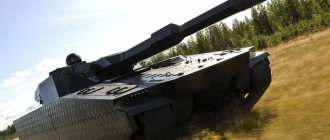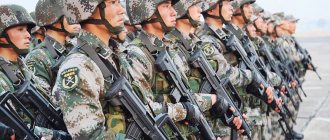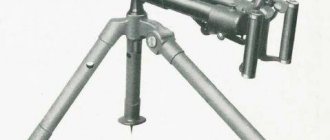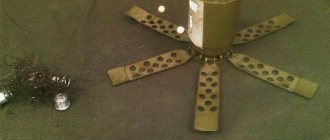TASS DOSSIER. On March 22, 2022, voting will end on the website of the Ministry of Defense of the Russian Federation for the name of new combat systems - a combat laser complex, a cruise missile with a nuclear power plant and an unmanned underwater vehicle. The Department of Information and Mass Communications of the military department reported that among the names of the combat laser complex, the leaders are “Basilisk”, “Peresvet” and “Blik”. The top three names for a cruise missile with a small-sized nuclear installation included “Palmyra”, “Surprise” and “Burevestnik”. The unmanned underwater vehicle will be called Poseidon, Aurora or Surf.
The new combat systems were first presented by Russian President Vladimir Putin on March 1 in his message to the Federal Assembly. The TASS-DOSSIER editors have prepared material about the history and rules for naming equipment and weapons in the armies of the USSR and Russia, as well as what names similar types of weapons had.
Designations of types of military equipment and weapons
Traditionally, in the USSR, military equipment received names consisting of a combination of letters and numbers. The letters in most cases indicated the type of military equipment (SB high-speed bomber), sometimes with the initials of the designer (Shpagin PPSh submachine gun). The number indicated the model number (Yak-9).
Since 1938, a system of indexing weapons using alphanumeric designations, which were assigned by the relevant departments of the Ministry of Defense, was introduced for unclassified correspondence. Thus, the world's first intercontinental missile R-7 had the index 8K71 in this system, and the AKM assault rifle had the index 6P1.
At the development stage, new types of weapons were called “products” or “objects” with the corresponding number. For example, the T-64 tank appeared in the design documentation as “object 432”, the R-60 aircraft missile as “product 62”. In addition, research and development work (topics) began to receive proper names (ciphers). Sometimes they became a commonly used name for military equipment even after it was adopted for service. These names are not secret and can be used in open sources.
In general, the tradition of assigning names to types of military equipment and weapons appeared after the Second World War, during which this practice was widely used by Germany, the USA and other countries. In the USSR, these names were initially informal (“Katyusha”, “St. John’s wort”).
Ready to fight back: The Ministry of Defense showed Russian equipment that has no analogues in the world
Whether by chance or not, exactly the day before the meeting between Blinkin and Lavrov, the Unified Day of Acceptance of Military Products took place in Russia. The Ministry of Defense showed what protects us and what quality this protection is. In the West, of course, they saw this.
That is, Lavrov convincingly proved that Russia does not want war, and Shoigu showed that they are ready to fight back, if anything happens. Russian troops received five thousand weapons last year. Now the equipment of the army and navy has exceeded 70%, and 89% of the strategic nuclear forces - this, by the way, is the highest level in the entire history of their existence.
And it turns out that at the moment the Russian army is the absolute world leader in this indicator. Ivan Litomin saw everything with his own eyes.
Airplanes and helicopters, anti-aircraft and anti-missile systems, military boats and submarines, ground-based sapper drones and heavy firefighting robots. On a single day of acceptance of the state defense order, the Russian army received hundreds of units of new ultra-modern equipment. These are truly unique shots. We are going down into the newest submarine Magadan.
Every turn of the camera here is monitored by employees of the State Secrets Protection Service. The submarine's newest equipment is classified. But the crew shows us the enemy detection system: next to modern computers, there is time-tested equipment.
"Magadan" - a class 636.3 submarine - is a small diesel submarine. It is considered one of the quietest in the world. It can dive to a depth of 300 meters, and the maximum range is seven and a half thousand miles, which is about 12 thousand kilometers.
The most secret compartment of a submarine is the torpedo compartment. It is here that the main striking force is located, eight Caliber cruise missiles. Four on each side. It’s practically impossible to shoot anything here.
Now the Magadan is preparing to move to the East - the crew will serve as part of the Pacific Fleet. Magadan is the third submarine in Project 636.3. Petropavlovsk-Kamchatsky was commissioned in 2019, Volkhov was commissioned in 20, and now Magadan is being accepted. The predecessor of "Magadan" - "Volkhov" - is already at its combat post. On the day of acceptance of its brother, it fired a “Caliber” at a ground target in the Khabarovsk Territory. The projectile flew more than a thousand kilometers and hit the target at the Syurkum training ground.
The Ministry of Defense has already called “Magadan” a kind of “cherry” on the cake of a single day of acceptance. At the meeting, Sergei Shoigu receives reports from different parts of the country. The Rostov region has already begun the so-called “fly-in” of new helicopters.
The brand new K-52 “alligator” helicopters are already performing their first flights. The task is as simple as possible - take off, make several circles over the airfield and land.
The “Alligators” passed all state tests with flying colors, and have been serving as part of the Aerospace Forces of the Southern District for about a week now.
Very soon, the “aerial reptiles” will be joined by modified “night hunters” - the Mi-28 NM. Their fuel tanks were increased, a new power plant was added to operate in any combat conditions, and the range of tasks was expanded.
“This is a new function and opportunity for combat vehicles to carry out missions using unmanned aerial vehicles. Previously, there was no such opportunity,” says Andrey Varfolomeev, deputy managing director of PJSC Rostvertol of the Russian Helicopters holding company.
These are also truly unique shots. The helicopter assembly shop is the most secret enterprise in the Rostov region. The updated Mi-28 was assembled here. The NM version has already been called the “night super hunter”.
The new modification of the Mi-28 NM has an armored cabin capable of protecting the crew from projectiles with a caliber of up to 20 millimeters. In addition, here, in the cockpit of the pilot-operator, the so-called co-pilot, the helicopter control system is completely duplicated. That is, the pilot operator can control the vehicle independently of the crew commander.
And this is a brand new “drying aircraft” taking off into the air - a fighter that has no analogues in the world. The Su-30 SM2 is even faster, even more invisible to radar and can now fly even longer without refueling. The new engine increases the combat radius and the affected area, and from the ground the pilots are covered by the Iskander universal missile system.
A modern air and missile defense system maintains a radius of up to 500 kilometers under the dome. On the day the state defense order was accepted, the Iskander went on combat duty in the Astrakhan region.
The equipment of the Russian army with modern equipment over the past year has finally exceeded 70%. Almost a thousand armored combat vehicles, four ships, ten boats, three submarines, including the nuclear cruiser “Prince Oleg”, one and a half hundred aircraft, helicopters and drones, and also “Pantsiri”, “Triumphs”, “Vityazi”. In 2021, the armed forces received a total of more than five thousand new and modernized models of military equipment.
“Equipping the armed forces with the latest models allows us to ensure the military security of our country and guaranteed protection of its national interests,” noted Russian Defense Minister Sergei Shoigu.
Our country is trying to resist the main threat to national interests—the expansion of the North Atlantic Alliance. Military experts assure: Russia historically only defends itself, and all these hundreds and thousands of vehicles and aircraft are only a 20th part of what NATO spends and puts into service. But a paradox! With a budget of almost a trillion dollars, the alliance’s army is comparable or even qualitatively inferior to ours in several components.
“The Americans do not have an air defense system like ours, a missile defense system like ours, a missile attack warning system like ours, no radar stations like ours,” says military observer Viktor Litovkin.
The Americans still do not have hypersonic weapons, while our “Daggers” and “Zircons” have already passed all tests and are on combat duty.
“Our successes in the development of hypersonic weapons, which have not yet entered service with the United States and the alliance countries and are unknown when they will arrive, are absolutely obvious. And we expect serial deliveries of these missile models this year,” military observer Mikhail Khodarenok is confident.
And even where we are significantly outnumbered - in the navy - the same Americans have serious problems. Until recently, the futuristic stealth destroyer Zamvolt stood rotting on a pier in Maine - the largest failure in the history of the US Navy. A record four billion dollars literally burned up: the destroyer's filters, which protect electrical equipment from power fluctuations, failed. The design ship is out of commission.
It is practically impossible to qualitatively evaluate NATO weapons. The alliance is made up of 30 member states with fundamentally different armies and training.
“The combat readiness of American forces is not in question. Then we have Canadian military personnel who are competent and professional. The British are competent. But there are other countries, such as Montenegro, which has a pathetic army. Croatia has a pathetic army. Slovenia has a pathetic army. Bulgaria, Romania,” says Politics First editor-in-chief Marcus Papadopoulos.
The Americans are actively using this influence and moving more and more equipment to our borders. They are already planning to arm Ukraine under Lend-Lease - the day before, Republicans introduced a bill in the Senate on special supplies of military equipment to our neighbors. The remaining member states of the alliance are helping the Ukrainian army in any way they can: Lithuania with thermal imagers, Estonia with anti-tank, but again American Javelin.
“We are not partners, we depend on the US, and the US gives us orders. We must understand that all these American bases, or NATO bases, bear the imprint of oppression and control. All NATO countries are morally and spiritually exhausted. They are not ready for the scenario of an aggressive war. They simply won’t be able to withstand this,” says German politician, federal chairman of the German Center party Christoph Herstel
Scenarios of aggressive war are always dictated by American generals. This happened in Vietnam, Afghanistan, Iraq, even Syria. The tactics are the same everywhere, the effectiveness is low everywhere. The consequences are dire. Their companies cannot be called successful.
It is the Russian army that is actively restraining the aggressive plans of NATO and America. A single day for the acceptance of state defense orders is a kind of result of the past year with a clear outlook for the coming year. The generals make plans, the agenda dictates reality, and adjustments are made based on the current situation. They plan to test the new equipment in early February at the Russian-Belarusian exercises “Union Resolve-2022”.
On what basis are weapons named?
There are no strictly regulated rules for assigning such names. In some cases, one can note similar names of the same types of weapons, most likely depending on a specific design bureau or department.
Many anti-aircraft missile systems were named after rivers (Dvina, Volkhov, Shilka) and geometric figures (Cube, Square, Tor). However, this rule did not always apply (exceptions are the Buk, Osa, etc.).
Submarines have traditionally been named after fish and sea animals (“Moray eel”, “Ruff”, “Squid”). However, even here there is no strict system (submarines of the Anchar, Granit, and Yasen projects were built).
For a long time, self-propelled artillery systems were named after colors (“Peony,” “Tulip,” “Hyacinth”), and multiple launch rocket systems were named after meteorological phenomena (“Grad,” “Tornado,” “Tornado”).
Other types of military equipment, as well as research and development (R&D) work on their creation bore a variety of, sometimes unexpected names - for example, “Inevitability” (research work as part of the creation of an intercontinental missile), “Phantasmagoria” ( aviation target designation system), "Metis" (anti-tank missile), "Animation" (mobile balloon complex), "Tray" (82-mm mortar).
In a number of cases, the names appeared by accident: the Serpey bottom mine, which was put into service in 1959, was originally supposed to be called “Perseus,” but a typo was made during the preparation of the documentation.
120-mm self-propelled gun 2S21 “Crimping”.
0
Soviet experimental divisional 152-mm self-propelled howitzer, which could fire at a distance of 6.5 to 29 kilometers. The gun was mounted on the Ural-5323 and KrAZ-6316 chassis. But, unfortunately, it never went into series. In 1987, due to the inexpediency of further modifications to the base chassis, work on the project was stopped. But, judging by the weapon, it “squeezed” tightly.
What were combat lasers, cruise missiles and underwater vehicles called?
Open sources mention such projects of combat laser systems as Omega, Drift, Sokol-Echelon and Duelist. The lasers created for the ground forces, which blinded the enemy's optical-electronic systems, were hidden under the codes "Sanguine", "Stiletto" and "Compression". The Akvilon and Aidar marine complexes were successfully tested in the 1980s.
The first projects of long-range strategic cruise missiles, developed in the 1950s by the Design Bureau of Semyon Lavochkin and Vladimir Myasishchev, were called “Storm” and “Buran”. They were not adopted for service, like the later Burevestnik and Meteorite projects. The Relief land-based strategic cruise missiles were eliminated in accordance with the INF Treaty, while their naval counterpart, the Granat, remained in service.
The promising uninhabited underwater vehicles of various types being created, as well as research and development work on their creation, according to available data, are called “Harpsichord”, “Skif”, “Amulet”, “Juno”, “Surrogate” and “Concept”.
Tank T-72-120 “Banana”.
0
A modernized version of the T-72 tank using a 120 mm caliber gun and NATO standard ammunition. The tank itself really turned out great. But I just want to ask the designers: what in its appearance made you think about bananas? This is how the headlines of news agencies look like: “Bananov battalion successfully completed tests at the training ground.”
